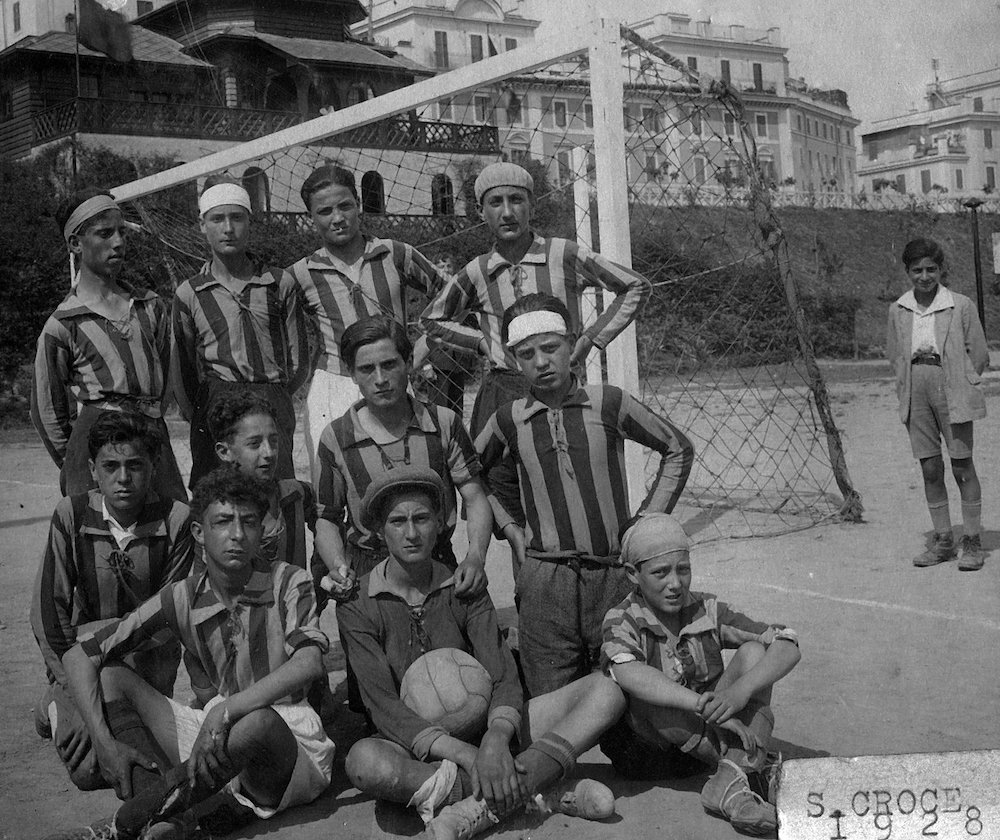The eyes of avid soccer fans are on the 2022 World Cup in Qatar featuring the greatest and most recognizable athletes in the world – including baptized Catholics such as Lionel Messi and Cristiano Ronaldo.
The global tournament held every four years is a nearly century- old tradition with the first competition held in 1930.
But several thousand miles away, the next generation of soccer players, religious and even the Vatican’s national team have displayed their skills on five fields nestled in a Rome neighborhood – overlooking St. Peter’s Basilica – maintained by the Knights of Columbus for just as long.
The soccer fields have served a loftier goal than simply being arenas of competition. They function under a mission entrusted to the Knights by Pope Benedict XV: to keep the children of Rome Catholic.
Such a responsibility was imparted on the Catholic fraternal organization’s leaders when meeting with the pope on a pilgrimage to the Eternal City Aug. 28, 1920.
Impressed by the order’s recreation efforts during World War I, Pope Benedict XV addressed his concerns over emerging anti-Catholic sentiments ravaging secular sports associations that attracted Catholic youth. The best prevention of apostasy, he believed, was providing high quality sports centers under the auspices of a Catholic organization.
“There is another field of competition before you, may the struggle bring you as much merit as it brings us hope,” the pope told the Knights’ leaders.
The Knights heeded the pope’s plea. Between 1922 and 1927, the organization constructed five recreation centers. Known as “playgrounds,” each center was designed in the architectural style of the surrounding neighborhood. They included an outdoor soccer field, clubhouse and gymnasium.
True to the mission, Rome’s children, parishes and schools were, and still are, allowed free use of the five fields. More than 100,000 children utilized the center in the San Lorenzo district alone within the first year.
However, the playgrounds soon were threatened under Italian leader Benito Mussolini and the rise of fascism. The government suspended the centers’ operations in 1931 in order to absorb all youth programs under its indoctrinating jurisdiction.
Recognizing how such an arrangement was antithetical to the centers’ mission, Galeazzi urgently persuaded Italy’s Ministry of Foreign Affairs to eventually allow the Knights to continue their work. Other organizations such as the Boy Scouts and Catholic Action had to shut down unless they formed part of a fascist youth organization.
Throughout World War II, the playgrounds remained open, but also served as Vatican hubs for food distribution to Rome’s citizens. In collaboration with the United Nations Relief and Rehabilitation Administration, reportedly 400,000 were fed daily at the sports centers after the war.
This nearly century-long work is aligned with the Knights’ tradition of providing sports opportunities for children including baseball and basketball leagues throughout the 20th and 21st centuries, as well as the annual Free Throw Championship, Soccer Challenge and Special Olympics competitions.
In more recent years, the soccer fields – particularly Campo Pio XI – have hosted three matches for the Vatican City national team in 2014, 2017 and 2019. Prior to the pandemic, the annual Clericus Cup tournament for the pontifical seminaries and universities in Rome has taken place at Campo Pio XI.

